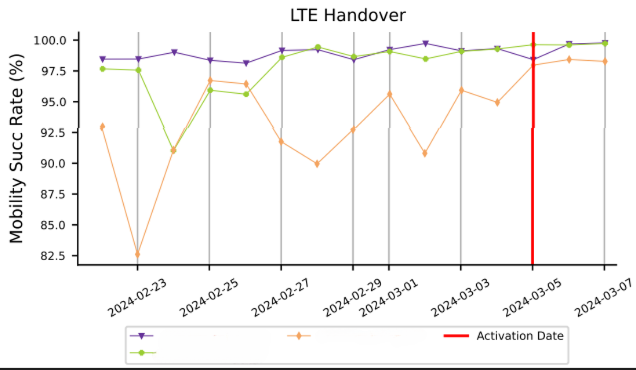Step-by-Step Guide to Optimize Handover (HO) in LTE Networks
Admin note: this post was updated with image below.

Handover is essential in LTE networks, ensuring the continuity of calls and data connections as users move between cells. If poorly adjusted, it can cause call drops and connection failures. Therefore, optimizing HO is crucial to improve network quality and customer service.
Here is the step-by-step guide for efficient HO tuning:
-
Collect Handover Data
The first step is to analyze intra- and inter-frequency handover data. Checking the attempt and success rates in HO, both in preparation and execution, helps identify failures or excessive attempts. -
Analyze Neighbor Relations
After understanding HO performance, it is necessary to check the relationships between cells. Adjusting or removing unnecessary neighbors, especially inter-frequency ones, can reduce failed attempts and improve HO efficiency. It is important to remember that intra-frequency relations should not be cut, only adjusted or attenuated to optimize handover. -
Adjust Cell Offsets
Adjusting cell offsets is crucial to ensure that HO occurs at the ideal moment. This avoids premature handovers and improves user experience by reducing frequent handovers that can overload the network. -
Execute Neighbor Tuning
After analysis, modifications in cell relationships may be necessary. Removing poorly optimized inter-frequency neighbors or adjusting offsets can smooth or intensify the handover between cells, depending on signal quality. -
Monitor Results
After adjustments, monitoring HO indicators, such as success and preparation rates, ensures that the changes brought improvements. Graphical tools can help visualize HO efficiency and identify new areas for adjustment. -
Repeat the Optimization Cycle
HO optimization is continuous. With network evolution and traffic changes, new optimizations may be necessary to ensure the best possible quality.
Importance of Handover Optimization
Optimizing handover improves user experience by avoiding interruptions and network overloads, as well as ensuring customer satisfaction. Proper tuning is vital for service stability and quality.
If you work with mobile networks, you know that optimizing HO is not just a technical adjustment but an essential step to ensure quality and efficiency in service.
LinkedIn (in Portuguese): ![]()
Check out a glimpse of this process…



